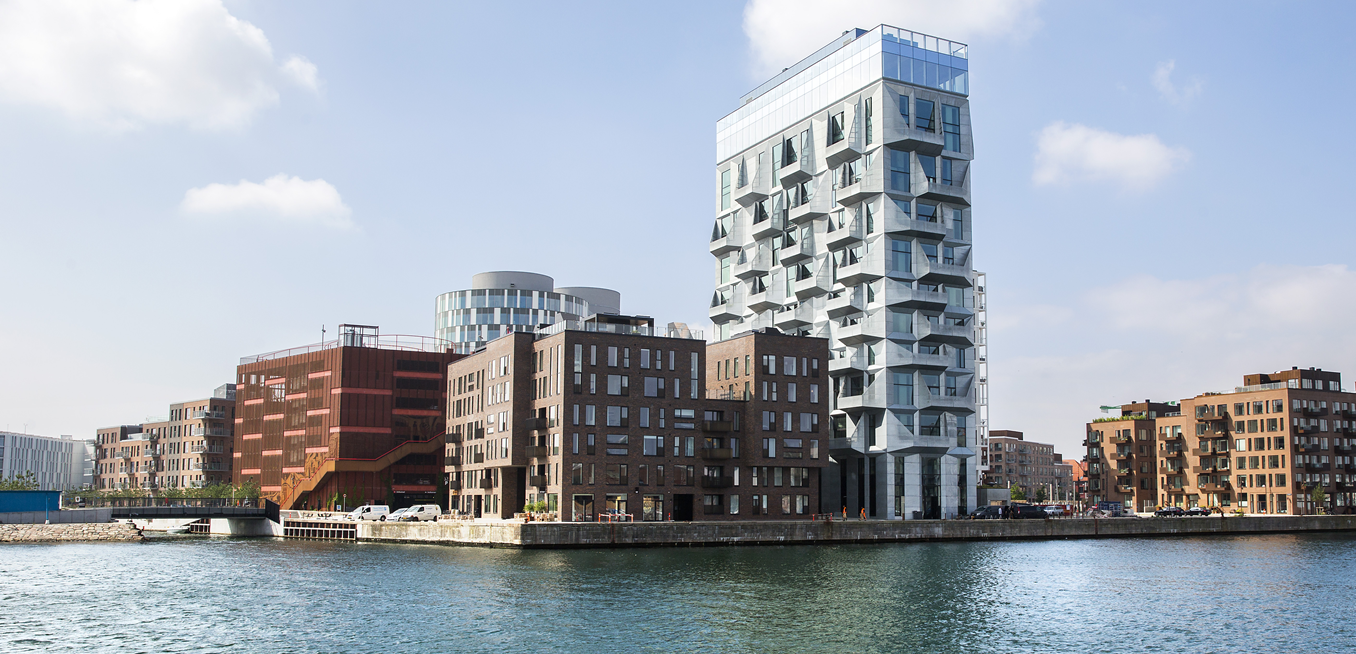Download our publication on district energy
This article is part of our publication ‘District Energy’
Download nowPerspective
District energy


The cities of the future are equipped with sustainable, intelligent, and flexible energy solutions. In Svanemølleholmen, the newest part of the sustainable urban area of Nordhavn in Copenhagen, HOFOR is planning a combined district heating and cooling plant. The plant will also house a sewage pump station.
Nordhavn is Copenhagen’s newest and most sustainable urban neighbourhood. In 2021, HOFOR, the Greater Copenhagen Utility, plans to commission yet another district cooling plant in this part of town in order for the many office buildings in the area to have the opportunity to connect to climate friendly district cooling. However, instead of planning for a regular district cooling plant, HOFOR is aiming for making use of the possibility to combine a cooling plant with a modern heat pump using seawater to also produce heating for the area.
This article is part of our publication ‘District Energy’
Download nowThe district cooling system in Copenhagen primarily makes use of seawater to chill the water supplied as air-conditioning to commercial buildings such as hotels and banks as well as cooling for servers all year round. HOFOR has also installed several heat pumps in Copenhagen, which can extract energy from sources such as groundwater, sewage water and seawater. These are some of the major energy sources which have the potential to supply the apital with even greener district heating in the future.
The newest district of the Nordhavn area, Svanemølleholmen, is currently under transformation from an industrial area to an area with offices. The many buildings will be supplied with district heating as well as district cooling, and as a result, HOFOR will make use of the opportunity to test and demonstrate how to work efficiently with the integration of district heating and cooling. This will be done by installing both a modern heat pump using seawater and a district cooling plant in one location, which will also house a sewage pump, ensuring that the area can discharge its wastewater.
When HOFOR cools office buildings with district cooling, the excess heat from the buildings can be used to create district heating. Similarly, the district cooling water can be used to cool the heat pump. As a result, the project in Nordhavn can be used as a test and demonstration case for new green technologies in the local area. The integration project in Nordhavn can also serve as a feasibility study of the business case to be used elsewhere.
The solutions implemented by HOFOR in Nordhavn help the citizens of Copenhagen reduce their carbon emissions and contribute to achieving the Danish capital’s ambitious goal of becoming CO2-neutral by 2025. When tested and demonstrated in Nordhavn, these solutions can, over time, be scaled to new urban areas in major cities all over the world.
publications
Combined heat and power production
+9
events
Urban planning and development
+7